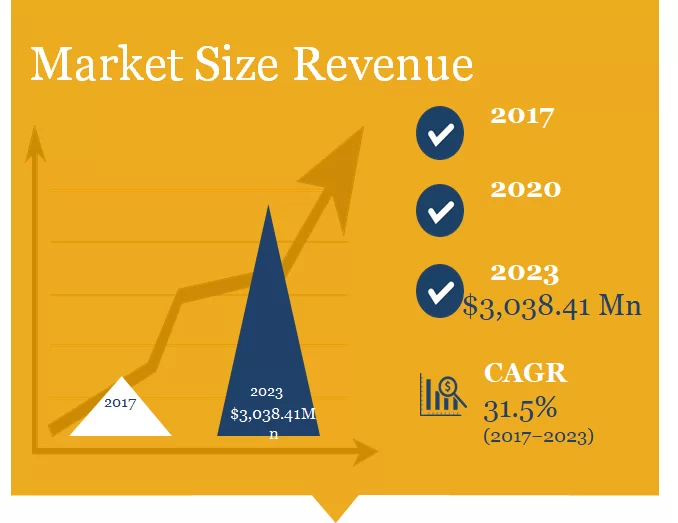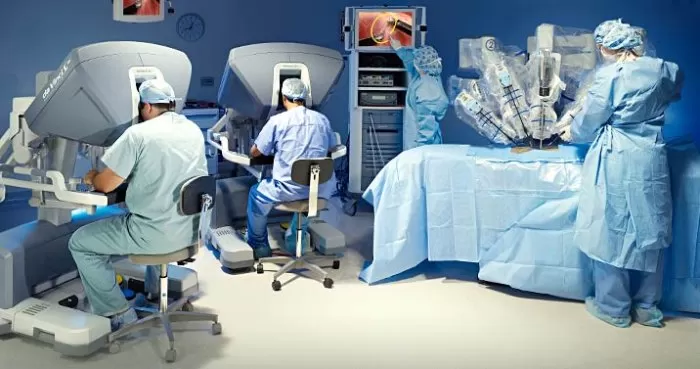For the time being, the overwhelming majority of new technologies are used in the entertainment industry. A vivid example of such innovations is virtual reality. When hearing about VR, most people would be thinking about movies, gaming, VR helmets and glasses which plunge users into the worlds of phantasy. However, the application of virtual reality goes far beyond having fun. It’s quickly becoming one of the most significant trends in the medical domain. According to advisory and intelligence company Arizon’s report, the AR and VR market in healthcare is predicted to generate about $3.03 billion of revenue by 2023 and is anticipated to grow at a CAGR of more than 31% during the forecast period. Respectively, the VR healthcare market has increased as well: it was valued at 525 million dollars in 2012, and by 2017, it’s worth 976 million.

Now let’s observe the most interesting VR applications up to date. Surgery In April 2017, the operation of a cancerous tumor removal was performed at the Royal London Hospital. This event is notable for the fact that the entire course of the operation was broadcast to the network thanks to the Google Glass worn by the surgeon. 13.000 medical students watched him live with just a minute delay. They could even ask him questions displayed in the form of text on the periphery of his field of vision, and he answered them directly using his voice. Of course, operations have been filmed earlier, but this was the first time when:
- The audience could observe the whole process through the eyes of the surgeon.
- The operation could be viewed almost in real time on any mobile devices, including VR glasses.
- One could remotely ask the surgeon questions and get answers.
This use case has been mentioned for a good reason. Perhaps, VR technologies are most widely used precisely in surgery. After all, it is difficult to find another field of medicine in which visualization and feedback on the actions of a doctor plays a more important role. Just like in any other profession, the skills in surgery are acquired with experience. The technology of VR is ideal for training as no model compares in terms of the likelihood to a virtual simulator. Moreover, when practicing in the anatomy room, the „working material“ may “react” to the mistakes of students not precisely in the same way as a living person does, if, for instance, a blood vessel is accidentally touched. Secondly, virtual simulators do not suffer from lacking samples and virtual…bodies. With this reason in mind, Stanford University develops and applies software/hardware systems with detailed imagery of various organs and human body parts which provide force tactile feedback. These image-guided simulations allow surgeons to practice procedures on 3-dimensional reconstructions of the anatomy of their actual patients, whom they plan to operate in real life. In all of these simulations, trainees can be guided through telemonitoring: this allows surgeons to have a bigger picture when training.

The combinations of reality and simulation are gaining popularity. Darryl S. Weiman, professor of Surgery at the University of Tennessee Health Science Center, says that they are “finishing a new building devoted to simulation.” Simulated operations offer the possibility to practice – without any possible harmful consequences for the patients’ health and without burdening the fast-paced system where patients have to be treated efficiently.
Treating Phobias And Pains
Yes, VR helps ease the process of treatment various… phobias. One of the most common phobias in the world is arachnophobia, and VR applications like Spider World help effectively treat the fear of spiders. The patient touches a furry toy spider, which is electronically cued to a virtual spider image. The brain unifies the sensory input from sight and touche into a single experience, giving this particular patient the sensation of physically touching a virtual tarantula. Placing the patient in the virtual reality environment allows him to face the source of the fears without any danger. This way, arachnophobics can learn to control and cope with their emotions and reactions. And those who are suffering from acrophobia – fear of heights – are sent to walk on the roofs of virtual buildings with a gradual increase in a number of floors. There are applications for preventing fear of flying, driving a car, etc. As a matter of fact, our consciousness is an incredibly powerful “tool” that can completely change the perception of oneself, our body and the world around us. However, the most of us have limited abilities for managing this tool. And here comes another chance for VR to make a difference. Patients with extensive body burns suffer from severe pain, which can’t be completely removed by using medicine. The remedy? A virtual game called SnowWorld. The action takes place in a winter world, your enemies are snowmen and penguins, and the only weapon you have is a bunch of snowballs. According to the research results, thanks to this game, patients think three times less about the pain.
Autism Research
Scientists at the University of Texas at Dallas have created a program which helps people with a highly active form of autism to work on social behavior skills. With the help of VR, autistics fall into simulated situations: it can be a job interview or a conversation with a colleague about a football match while the program reads and analyzes the brain impulses of the patient. As the study showed, at the end of the therapy session, patients were reported to have increased activity in the brain area associated with social behavior and perception of the surrounding world. In addition, VR helps scientists explore how a healthy brain perceives the world through the „eyes“ of an autistic. This way, a doctor or an ordinary person can see through the VR glasses a „distorted“ reality to better understand what does it take to be an autistic person.
Rehabilitation
The rehabilitation of patients is an essential step on the way to recovery or adaptation. Many patients who have lost their limbs as a result of trauma or surgery, may face a syndrome of phantom pain. They might feel the sensation of burning, itching, tingling or other forms. Until recently, there was a limited number of effective ways to get rid of phantom pains. At the Chalmers University of Technology (Sweden), doctors connected sensors that removed signals from contracted muscles to a patient with an amputated arm. Then the computer turned them into virtual hand movements displayed via VR glasses. The patient could not only move his “hand”, but even drive a virtual car! The brain receives a visual confirmation that the limb, which controls the wheel, exists and responds to signals. Patients claim that the intensity of pain decreases, and it manifests less often. Similarly, stroke and brain-injury patients are going through VR therapy during rehabilitation to regain motor and cognitive skills. Dr. Brennan Spiegel, an active VR evangelist, comments: “We preliminary found a 24% reduction in pain after only ten minutes of using a special visualization called Pain RelieVR, created by AppliedVR and administered via Samsung Gear goggles.” The immersion into virtual reality is one of the most effective tools for fighting post-traumatic syndrome in the military. Some American clinics and hospitals “place” war veterans who experienced a severe shock in the war into a simulated hot spot. This practice helps them to experience their personal emotional turmoil one more time, however not in memories, but in virtual reality. Experts say that this allows patients to „let go“ real experiences. Another compelling case of VR application is the therapy of patients with neurophysiological disorders. For example, the MindMaze’s app tracks a person’s movements and displays them on a screen. According to the developers, while trying to perform the proposed tasks, the brain gradually restores and rebuilds the broken neural connections. The VR technology makes its huge steps in the healthcare domain, and its impact as you can see from use cases above is already tangible. The variety of devices and software is growing, and one may confidently say that this technology will be increasingly used for providing treatment.









